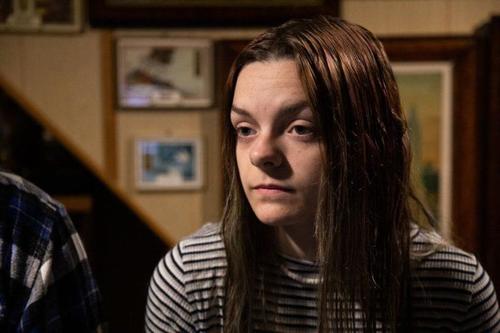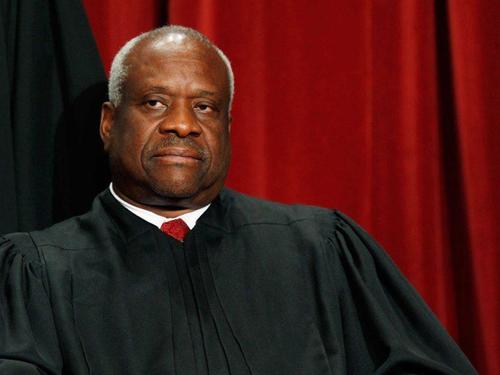Cheerleader Temper Tantrum Sparks SCOTUS Free Speech Debate
Authored by Leesa K. Donner via Liberty Nation News (emphasis ours),
When 14-year-old Brandi Levy had a temper tantrum on Snapchat four years ago, little did she know she would pay for her outburst and become the poster child for off-campus free speech rights. The former high school cheerleader was punished for her online conniption by Pennsylvania’s Mahanoy Area High School, and whether school authorities had the right to discipline her has been argued on up the legal food chain to the U.S. Supreme Court. In what many are saying will likely prove to be a “momentous decision,” Levy has landed at the center of the free speech maelstrom.
On its face, the off-campus speech rights of public school students appears to be an open-and-shut case for lovers of liberty; however, Levy’s legal battle is filled with nuance and carries with it many complex contours. It all began when the cheerleader had a meltdown and threw out the F-bomb on the social media platform Snapchat. The fact that everything on Snapchat is erased within 24 hours mattered not because her outburst was noticed by school officials who used it as the reason to suspend her from the cheerleading squad.
[As Bloomberg notes: In the spring of 2017, Levy, then 14, tried out for the varsity cheer squad at Mahanoy Area High School, but only managed to make the JV team. She expressed her reaction on Snapchat in a post that read “Fuck school fuck softball fuck cheer fuck everything. The post went up on a Saturday, reached some 250 of her friends and, like all other posts to the social media platform, disappeared after 24 hours. Nevertheless, a classmate showed a screenshot to her mother, who happened to be one of the cheer coaches.]
What resulted was four years of legal battles before numerous courts. Even the Biden administration has weighed in on this one. Still, this case has an uncommon mix of political alliances. Imagine the Pennsylvania American Civil Liberties Union and the Alliance Defending Freedom and the Christian Legal Society on the same side? David Cole, the attorney set to argue the case in front of the Supreme Court this week, was quoted in a prominent Washington newspaper as saying, “You won’t find another case in the past decade with such a diverse range of groups on the same side.” Strange political bedfellows, indeed.
* * *
In Wednesday oral arguments, justices were faced with whether to grant school officials the authority to regulate students’ speech when they aren’t in the classroom or participating in school-related activities such as sports. According to Just the News, “Justices expressed skepticism about each side’s proposed legal test, especially how schools would determine that off-campus speech is “directed” at them and can thus be regulated. Some justices seemed receptive to a halfway measure, though: limiting off-campus jurisdiction to extracurricular activities like team sports, at least in some situations.”
Attorney Lisa Blatt, representing Mahanoy Area Schools, emphasized that schools only want the power to stop students from “terrorizing” each other or teachers, regardless of where it happens.
She said “madness, confusion and chaos” would result from the argument made by ACLU lawyer David Cole, who is representing cheerleader Brandi Levy. Blatt derided his “Twilight Zone” portrayal of schools as “the gulag,” ordering students what to think and banning dissent.
Cole retorted that Blatt’s argument would create a “24-7 rule” where students “carry the schoolhouse on their backs” everywhere they go. Justice Neil Gorsuch echoed the lawyer’s argument that parental rights were endangered as schools expand their jurisdiction.
Justice Kavanaugh, who has coached his daughter’s basketball team, agreed with Cole that students need space for “venting frustration,” as Levy did when she failed to make the varsity squad.
She “blew off steam like millions of other kids” when they get cut from teams, Kavanaugh said, citing basketball great Michael Jordan. With Levy’s yearlong suspension from the team, it “didn’t seem like the punishment was tailored to the offense.”
Justice Amy Coney Barrett said her colleagues didn’t see a “material and substantial disruption” — the only exception to student rights under Tinker — stemming from the Snapchat rant. “Schools abuse this authority” by inventing disruptions, she told Blatt, when they could constitutionally issue “soft punishment” such as warnings for gray-area violations. –Just the News
During questioning, Justice Clarence Thomas asked Blatt about the difference between off-campus speech about Antifa and Black Lives Matter, and classroom discussions which can be “just as disruptive” – to which the attorney rejected the suggestion that students can get in trouble for simply sharing unpopular views, arguing that wearing a Confederate flag symbol “alone” is protected, but not when it’s used to “terrorize” a black student. (For the rest of the blow-by-blow from Wednesday’s hearing, click here)
* * *
Central to determining an outcome is the query: Where does the schoolyard end? Not only was Levy’s rant posted only on a social media platform rather than uttered on the school grounds – but also was done on the weekend and not connected to a school event per se. So, what could be the problem here?
If you tease out a student’s right to free speech, many legitimate areas of concern go from harmless to life-threatening. What if a smart-aleck decides to post the answers to an exam online, another student chooses to put up pictures of a schoolmate engaged in sexual activity, or – worse – another repeatedly encourages a youngster to commit suicide?
On the other hand, one could reasonably argue that schools have no right to police what students say 24/7. The ACLU’s Witold “Vic” Walczak made the case to PennLive.com that giving schools this type of power over a student is likely to create a monster. “And that is super dangerous. Not only would students like Brandi not be able to express non-threatening, non-harassing bursts of frustration, but it would give schools the possibility of regulating important political and religious speech,” Walczak said.
The Freedom Forum Institute posits:
“Though public-school students do possess First Amendment freedoms, the courts allow school officials to regulate certain types of student expression. For example, school officials may prohibit speech that substantially disrupts the school environment or that invades the rights of others. Many courts have held that school officials can restrict student speech that is lewd.”
That may sound black and white, but in reality it has turned out to be many shades of gray.
Vietnam Flashbacks
The last time the U.S. Supreme Court decided a student speech rights case of this magnitude was back in the days of anti-Vietnam war protests. In Tinker v. Des Moines Independent Community School District, the High Court found 7-2 in favor of Mary Beth Tinker. It ruled Tinker was not being “disruptive” when she wore a black armband to school to protest the Vietnam war.
Since then, several current Supreme Court associate justices have weighed in on Tinker and similar cases in the lower courts.
Justice Clarence Thomas wrote that the U.S. Constitution “does not protect student speech in public schools” (Morse v. Frederick). Justice Sonia Sotomayor sided with a school district in yet another case when she was on the U.S. Court of Appeals for the 2nd Circuit.
Here lies a case where political, ideological, and philosophical differences do not appear to matter, and justices may have to play Solomon and split the baby in two to render a decision that a majority can support.
Who knows where the wind will blow on this one?
Tyler Durden
Thu, 04/29/2021 – 09:35
via ZeroHedge News https://ift.tt/3aRAyIa Tyler Durden

